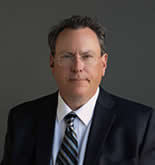articles
Safety Committees - Safety Culture: It's Not Just Another Trend
By: Greg Gerganoff
Tel: 303-330-4616
Email Mr. Gerganoff
View Profile on Experts.com.
Safety culture is a term frequently bandied about in today's business world and sounds as trendy as "mission statements" were years ago. (Let's not forget "best in class". First time I heard this at a company meeting I looked around to make sure I hadn't mistakenly wandered into a dog show. Really?)
What is a safety culture and if everyone is talking about this where do I get one? First every business has a safety culture. (1) Second why be concerned about safety culture? Independent research of OSHA VPP sites confirms that a strong safety culture has the single greatest impact on incident reduction. No other activity has such influence on safety. This means an organized safety program along the lines of OSHA VPP produces results. (OSHA VPP utilizes many of the elements listed below.) (2) That is why a sound safety culture is valuable and effective.
Before discussing improving your safety culture ponder this; the late Peter Drucker said of management, "Most of what we call management consists of making it difficult for people to get their work done." A functioning safety culture avoids Drucker's descriptor.
So how do you improve your safety culture? Fairly easily. First, top management must want do to this. Second, top management and labor need by involved. Safety culture is a joint venture. Third, the key words are persistence and patience combined with more persistence and more patience. With management and labor collaborating combined with the safety manager providing technical guidance your safety culture can grow into the effective system implied in the name. But first some fundamentals.
Two guiding thoughts before proceeding to specifics: A functioning safety culture is one where both labor and management seek to identify and eliminate safety hazards is a common objective though each will have its own particular role. Implied in the common goal is labor readily identifying hazards AND management providing effective help/pathway for fixing identified hazards requiring its involvement. (Labor should carry out repairs that are simple/easy and according to its level of expertise/knowledge thus reducing management's time handling simple fixes.)
Respect. This means both groups deal with each other with acknowledged respect. If a good idea is raised it should be acted on. Ideas less than perfect, won't work for some reason or are infeasible management need explain/discuss why. Management need listen to labor's explanations as well to avoid a fix creating a problem. (Sometimes management's solution may create another hazard, interfere with production, make labor's job needlessly more difficult, etc.) This mutually respectful communicative process results in the transfer of knowledge and information missing in either group.
Roles:
- Management will oversee, act on, support and encourage safety manager, labor and subordinate managers.
Greg Gerganoff, ASP, CSP, Esq., is an OSHA / MSHA Safety field and compliance expert with experience in the heavy construction, oil and gas, mining, pipeline, and trenching and excavation industries.
©Copyright - All Rights Reserved
DO NOT REPRODUCE WITHOUT WRITTEN PERMISSION BY AUTHOR.


